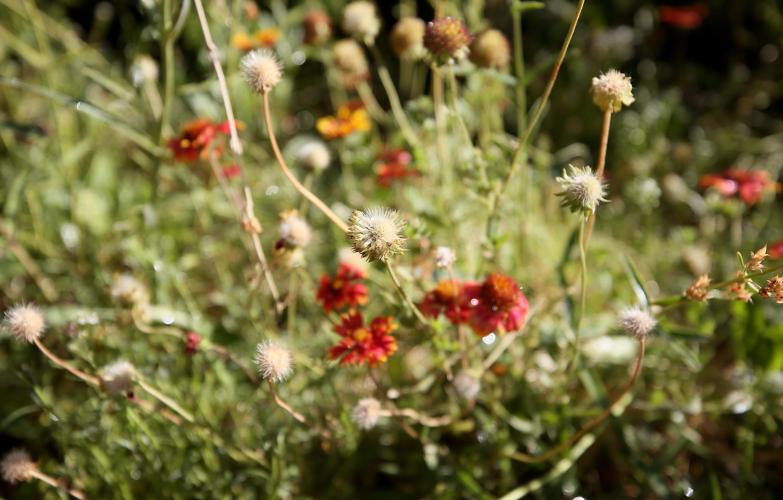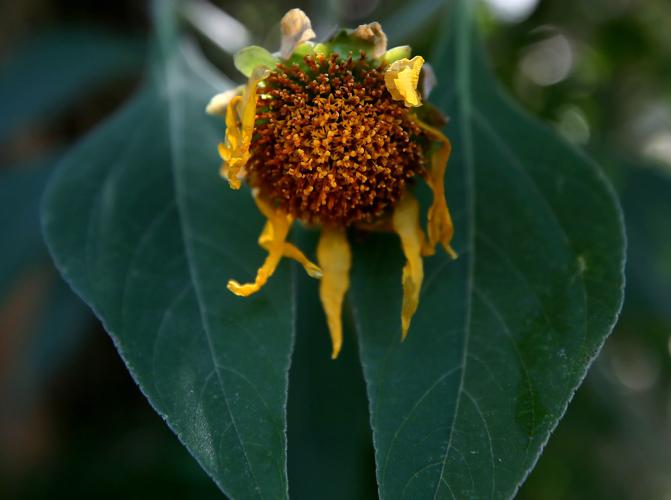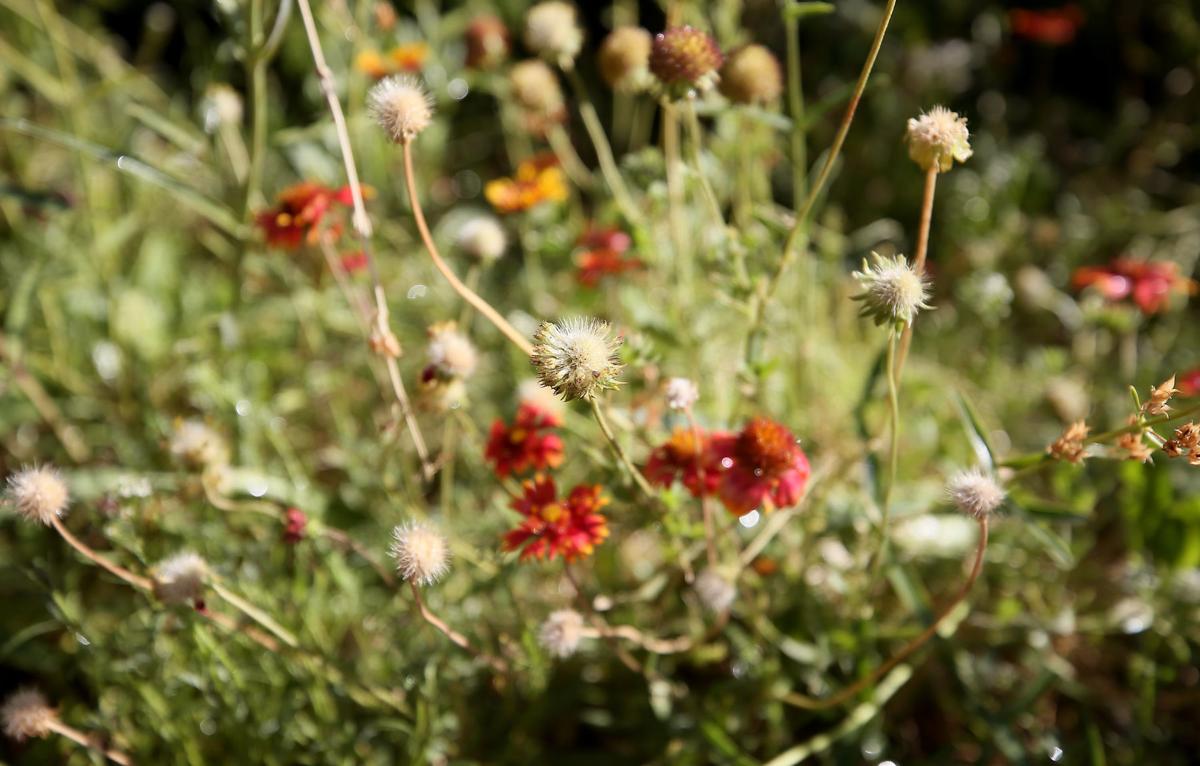National Pollinator Week June 18-24 is meant to create buzz among the public and get people all atwitter and aflutter over animals who make plants grow.
OK, we’ll bite. Here are some ways to locally appreciate pollinators and places to visit to find out how to attract the birds, bugs and bats that pollinate the Sonoran Desert.
DESERT POLLINATORS
To reproduce, most plants need pollen from a male plant or the male part of a plant to fall onto the reproductive organs of a female plant or female part of a plant.
That’s the role that creatures take on. Lured by nectar, the animals get sticky pollen grains on themselves and transfer them to other plants or plant parts.
“The wind is also a major pollinator,” says Mark Fleming, curator of botany at the Arizona Sonora Desert Museum, “but not so much in the Desert Southwest as elsewhere.”
There are hundreds of pollinator species in the Sonoran Desert: flies, beetles, bees, wasps, ants, butterflies, bats, hummingbirds and doves, to name a few.
“Most of our desert plants are adapted to pollination by native bees,” says Fleming.
Migratory animals that pollinate Sonoran Desert plants include lesser long-nosed bats, rufous hummingbirds, white-winged doves and monarch butterflies.
CELEBRATE
Tohono Chul Park will cap its spring adopt-a-bee fundraiser for the park with a Pollinator Party June 22. Adopt a native bee for as little as $5 and you get an invitation to the event. Taste samples of bee pollen and honeycomb at the molecular gastronomy bar, locally distilled spirits and regional honey.
Guests also can meet beekeepers, learn how to build bee habitats, read poetry inspired by pollinators and take pictures with a 5-foot anatomically correct cactus bee sculpture.
For information: tohonochulpark.org/bee
The Arizona Sonora Desert Museum is devoting its June 23 edition of Cool Summer Nights to pollinators. Docents will reveal the sights and sounds of night pollinators such as bats and moths.
Jesus Garcia, the museum’s education specialist, will show how you can create pollinator-friendly gardens, while conservation research scientist Kim Franklin will talk about native bees and how the honeybee survives.
Team competition for all ages is the format of a spelling bee.
For information: desertmuseum.org

Birds love the seeds this Mexican sunflower produces, says Rosemary Hooper, who has cultivated a pollinator garden that attracts birds, butterflies and other animals.
ATTRACT
There are dozens of plant species that attract Sonoran Desert pollinators. “Plants for Enhancing Pollinator Habitat in Arizona,” a list from the U.S. Department of Agriculture, names 49 flowering plants and trees that do well in our region.
There are several public gardens that have exhibits specifically to attract pollinators.
The desert museum has five: the Hummingbird Exhibit, Butterfly Garden, Moth Garden, Native Bee Garden and Nectar Bat Garden.
Tucson Botanical Gardens has 55 species of plants in its pollinator garden, as well as 15 other pollinated species throughout the grounds.
Tohono Chul Park has a colorful hummingbird garden. The park sells the book “Butterflies of Tohono Chul and the Plants They Love,” which has information on growing butterfly-loving species.
The Pima County master gardeners’ demonstration gardens include a pollinator landscape.
A master gardeners resource offers these general tips for selecting plants that animals will pollinate:
- Bees are attracted to fragrant ultraviolet, blue, purple or yellow flowers with petals that create a landing pad. Examples: lupine, palo verde, acacia, cassia, rosemary.
- Butterflies: orange, yellow, pink or blue flowers that have either landing pads or are tubular in shape. Examples: zinnia, calendula, Mexican sunflower, hollyhock.
- Moths: flowers that bloom and provide nectar at night, especially white flowers with a very strong, sweet scent. Examples: honeysuckle, datura, flowering tobacco, yucca.
- Beetles: red-brown flowers with spicy or rotting-fruit scent. Examples: magnolia, spice bush.
- Flies: green flowers with foul smells. Examples: Dutchman’s pipe, stapelia.
- Hummingbirds: red or orange tubular flowers. Examples: ocotillo, salvia, red yucca, aloe.
- Bats: night-blooming flowers. Examples: saguaro, agave.
Vulnerable to pesticides
Pollinators need more than nectar to survive. Creating habitat can help them out.
“Pollinators are in serious decline,” says Fleming, “especially bees, which are very susceptible to pesticides.”
Numbers of monarch butterflies have been reduced by 90 percent in the last decade, he says, because of human activity along migratory routes.
In Rosemary Hooper’s midtown garden, she provides elements that invite creatures to hang out.
They include fountains for drinking water; nectar and seed plants for food; trees, stacked wood and stone features for nesting sites; and leaf litter for shelter.
“My yard reflects enjoyment of nature and enjoyment of the life cycle,” says Hooper.
Hooper’s landscape is a wildlife habitat certified by the National Wildlife Federation, one of 1,203 such gardens in Southern Arizona.
Getting a yard certified teaches gardeners what’s important to attract native and migrating pollinators and other creatures.
The Tucson Audubon Society has several levels of wildlife bird designation in its Habitat at Home program.
The North American Butterfly Association certifies gardens that contain food sources for butterflies and caterpillars. It lists 14 such sites in the Tucson area.
Over 470 gardens in Pima County are part of the Million Pollinator Garden Challenge, where gardeners can post pictures of their gardens.
The National Pollinator Garden Network hopes to add 300,000 gardens to the program’s registry to reach its goal by the end of this year’s National Pollinator Week.
It’s not hard to help pollinators, says Erin Posthumus, outreach coordinator for the Tucson-based USA National Phenology Network.
“Even small actions like planting a few local wildflowers, letting native weeds grow and leaving some leaf litter on the ground can make a big difference,” she says.






